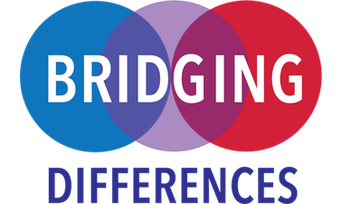 Learn research-based strategies for better relationships, dialogue, and understanding across divides. Relevant to anyone navigating conflicts and differences, especially geared toward college campuses. www.edx.org/course/bridging-differences About this course We encounter differences every day—differences in race, politics, gender, faith, and more. How can we connect across these differences, especially at a time of deep social polarization? In this course, you will learn core research-based principles and strategies for fostering positive relationships, dialogue, and understanding across lines of difference. Created by UC Berkeley’s Greater Good Science Center (GGSC), the course offers best practices that draw on scientific findings and case studies from real-world programs. It will zero in on how these evidence-based strategies can be applied to the divisions and conflicts that show up in our everyday relationships and in various sectors, with a particular focus on university and college campuses. The course builds on the GGSC’s popular Bridging Differences Playbook, which has already been used widely by leaders in government, education, corporate, and other settings.
0 Comments
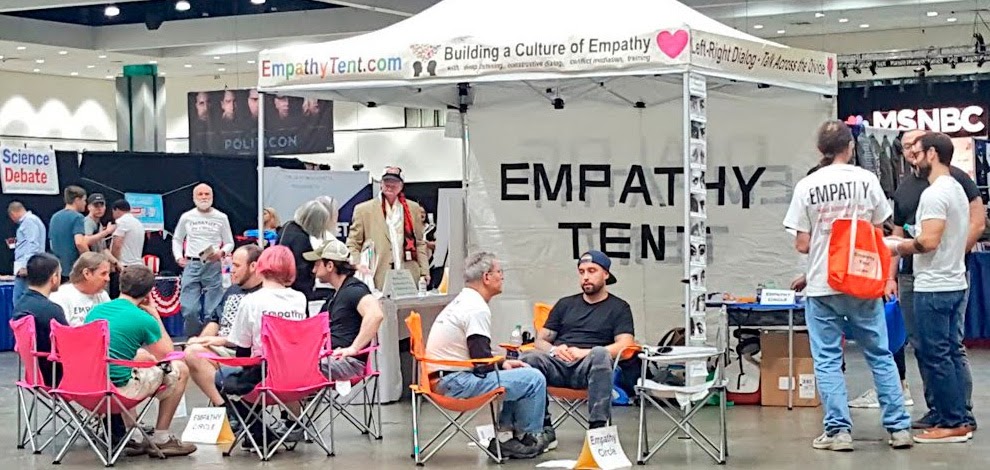 An Empathy Circle is a structured dialogue process that effectively supports meaningful and constructive dialogue. The basic process can be fairly easily learned in about 15 minutes and it is a lifelong practice to deepen. An Empathy Circle increases mutual understanding and connection by ensuring that each person feels fully heard to their satisfaction. The practice is the most effective gateway practice for learning, practicing and deepening listening and empathy skills, as well as, nurturing an empathic way of being.  A Conversation Café is a 90-minute hosted conversation which is held in a public setting like a coffee shop, bookstore or library, where anyone is welcome to join. Its simple format helps people feel at ease and gives everyone who wants to a chance to speak. The CC method was created by Vicki Robin, Susan Partnow and Habib Rose. During the summer of 2001, Habib, a natural networker, invited Vicki Robin and Susan Partnow to experiment with organizing neighborhood gatherings of “Cultural Creatives” in Seattle. The Cultural Creatives: How 50 Million People Are Changing the World is a nonfiction social sciences and sociology book by sociologist Paul H. Ray and psychologist Sherry Ruth Anderson. The three Seattleites were set to launch Conversation Cafés in September 2001, but changed gears after the 9-11 terror attacks took place. They immediately began hosting CCs to help people process their emotions and thoughts on what had and was happening in the country. 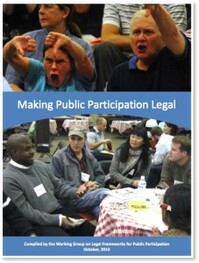 Most of the laws that govern public participation in the U.S. are over thirty years old. They do not match the expectations and capacities of citizens today, they pre-date the Internet, and they do not reflect the lessons learned in the last two decades about how citizens and governments can work together. Increasingly, public administrators and public engagement practitioners are hindered by the fact that it’s unclear if many of the best practices in participation are even allowed by the law. Making Public Participation Legal, a 2013 publication of the National Civic League (with support from the National Coalition for Dialogue & Deliberation), presents a valuable set of tools, including a model ordinance, set of policy options, and resource list, to help communities improve public participation. The tools and articles in Making Public Participation Legal were developed over a year by the Working Group on Legal Frameworks for Public Participation — an impressive team convened and guided by Matt Leighninger, formerly of the Deliberative Democracy Consortium (DDC). Imagine Chicago is a Chicago-based nonprofit that facilitates and trains people in community visioning practices. Founded by Bliss Browne in 1992, the organization utilizes a three-step process of understanding what is, imagining what could be through collaboration, and creating what will be through action. Its community visioning and planning model incorporates Appreciative Inquiry (with an emphasis on intergenerational collaboration), Open Space Technology, the World Café, and asset based community development. This approach has inspired the creation of Imagine and other community planning projects spanning six continents. Learn more at imaginechicago.org and see a list of similar initiatives cited by NCDD members below.
Imagine Chicago “designs, manages and facilitates intergenerational and intercultural networks and partnerships which cultivate hope and civic engagement and harness imagination for public good” through the use of constructive questions, dialogue, curriculum and event design, and network formation. NCDD has run “Reflective Panels” at most of our national conferences. The Reflective Panel is the closest we come to a “keynote speech” at NCDD conferences, enabling conference participants to hear from figureheads in our field without enduring long speeches with no dialogic quality to them. Unlike traditional “talking head” panel presentations, conversation in this space flows among the panelists without long monologues. The format is designed to build collective intelligence while honoring and modeling the spirit and power of dialogue.
The reflective panel at our 2004 conference in Denver was our way of enabling conference participants to hear from some of the most prominent leaders in the field while still retaining high levels of participation and a dialogic quality. This unique plenary session was one of the most well-received features of the conference, using the “inquiry circle” method to keep a conversation flowing among panelists. Participants called it “inspirational and informative” in their evaluations. To one person, the circular process used in the reflective panel was “new to me and a complete revelation.” Another commented that it was a “great way of facilitating a panel experience in plenary that avoided long monologues and was more interactive.” The five panelists we featured at the 2004 conference were Jim Fishkin, Glenna Gerard, Martha McCoy, Hal Saunders, and Bill Ury. We used the Reflective Panel process again at the 2006 NCDD conference in San Francisco, in hopes of enabling five leaders in the dialogue and deliberation community to inspire everyone in the room to recommit to their own role as leaders in this emerging field of practice. Panelists included Juanita Brown, Chris Gates, Leanne Nurse, and John Gastil. 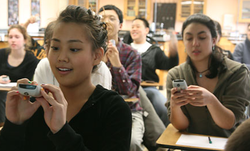 Keypads are audience response devices that look like little calculators or remote controls. They are used in group meetings or events to collect audience responses or opinions, allowing audience members to interact with presentations, give feedback, and become more engaged in large-group settings. Keypads are often used as an added element in large-group deliberation and dialogue events. This resource lists and links to experts in keypad response system as well as mobile device response systems, as recommended by NCDD members in April 2010. This resource was updated in 2021 to remove tools no longer available for use. At the 2008 NCDD conference in Austin, from 4:00 to 5:00 pm on the first day, we held a plenary session we called the “D&D Marketplace.” Similar to a poster session, the Marketplace provided a way for 20 or so presenters to introduce their work and their ideas to the majority of conference participants. Here’s how this high-energy session worked…
Conference planners selected people to present during the D&D Marketplace who are passionate about sharing tools, concepts, and success stories. During the session, these presenters struck up conversations with participants who strolled around the room, perusing the wares. No timers or buzzers were involved. Presenters displayed “posters” during the Marketplace (more on this below) and provided handouts for participants. They also prepared succinct “spiels” about their method, topic, case or resource so attendees could quickly learn the basics and follow up with whatever questions they had. During the D&D Marketplace, the round conference tables were removed from the ballroom so people had room to move about. Marketplace presenters were stationed throughout the room, standing at small cocktail table where they displayed information and handouts. Every Marketplace presenter was provided with a sign with their topic printed on it. Those who prepared posters were also provided with tabletop easels. During this 90-minute session, conference participants strolled around the ballroom, looking over posters, picking up resources, and talking with Marketplace presenters. Are you presenting in the Marketplace? Here’s what you’ll need to prepare…
About the Posters… D&D Marketplace presenters were invited to also prepare posters, which were displayed at their Marketplace table and then moved to a prominent location near the main ballroom for the rest of the three-day conference. Posters are a great way to introduce a large percentage of conference participants to your work or your idea. A workshop about a method, resource or program people aren’t familiar with may attract only a few people, while a poster on something new and innovative is likely to be seen by the majority of attendees. Your poster may consist of one large sheet of paper, or you can tack up multiple sheets of smaller paper. Your poster should take people through a process, program, concept or story. The type is large and wording is simple, and diagrams and pictures bring the poster to life. People should be able to quickly discern your message and determine whether they need to read more or move on. Although you will be able to walk people through the story/process/concept depicted on your poster during the marketplace and perhaps at other times as well, the poster should be able to clearly present the concept on its own. Your poster should NOT consist mainly of pasted-up pages of small type! Up to three co-authors can be named for each poster, and up to three people may present the poster during the D&D Marketplace. Lisa Heft distributed this meaty two-page handout during her “showcase” session on these processes at the 2006 NCDD conference in San Francisco. ‘Samoan’ Circles invite participants to share thoughts on complex and even conflicting issues – without feeling that someone will be solving, arguing or debating what they are sharing – and knowing that what they say will be witnessed by others. Inquiry Circles invite deep, rich thinking through the sharing of richly-textured questions, without any cross-dialogue but instead engaging the group in deep listening and weaving a deeper understanding together. Lisa Heft uses the term ‘Witness Circles’ as an overarching term for these and other similar methods.
Download this resource |
Categories
All
|
Follow Us
ABOUT NCDD
NCDD is a community and coalition of individuals and organizations who bring people together to discuss, decide and collaborate on today's toughest issues.
© The National Coalition For Dialogue And Deliberation, Inc. All rights reserved.
© The National Coalition For Dialogue And Deliberation, Inc. All rights reserved.
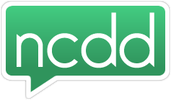

 RSS Feed
RSS Feed